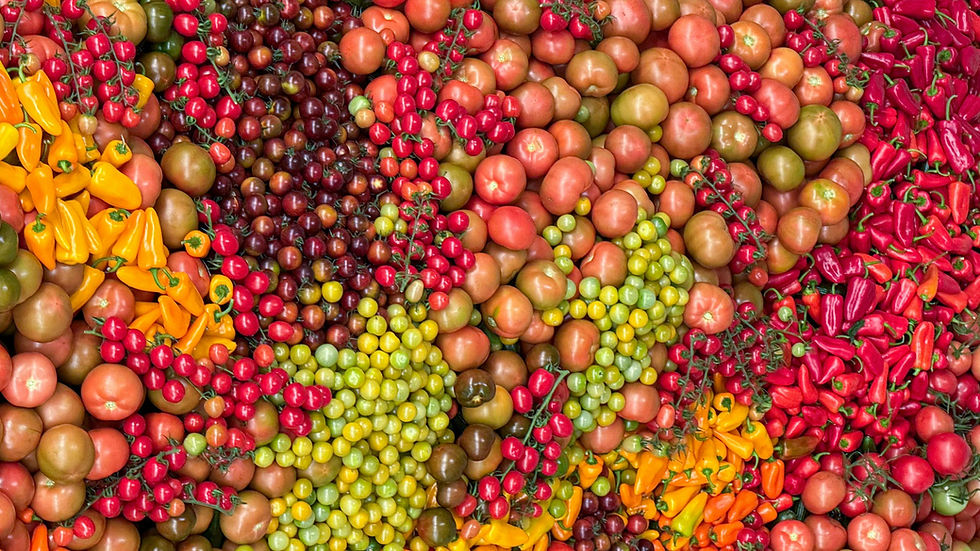Ode to peaches, right before they go
- Friends of Sustainable Agriculture

- Sep 5
- 3 min read
It’s the last end of summer and we are enjoying as much as we can of the last peaches. We know they will be abruptly gone from the farmers markets stalls any day now, so we are having our last moments of joy with them. There are few greater pleasures than biting into a perfect peach: skin fuzzy, a firm texture and an unbelievable amount of juice that makes it, in fact, complicated to eat indoors. It’s the taste of summer itself.

White, yellow, red, or flat; fuzzy or supple-skinned (nectarines!) they all are botanically classified as Prunus persica. The name suggests that it comes from Persia, modern-day Iran, but archeological findings have traced them back to China, where they were domesticated some 8000 years ago.
Thrown in with their cousins, cherries and plums, we know them collectively as stone fruit (or drupes, the technical word used by botanists) because of their characteristic pit, and they are all quintessential summer produce. Peaches can be classified as clingstone or freestone, depending on whether the pit clings or not to the flesh, which means that how easy a peach is to cut neatly depends on varieties, and not on your picking skills or the ripening stage of the fruit.
How did it get here from China?
As usually happens when we research the spread of a species, the peach’s hold on our palate grew over lines of trade and conquest. From China it traveled the Silk Road, arriving with merchants in Persia, Central Asia and the Middle East. From there, it is believed that it arrived to Europe with Alexander the Great, who in turn conquered Persia.

Spanish conquistadors brought it over to the Americas, of course, and there is evidence to it being already present in Florida and southern Georgia early in the XVI century. However, recent archeological research at Pennsylvania State University has realized that it was indeed not the Spanish that popularized it. By analyzing archaeological remains of peach pits throughout the South-Eastern United States, the scholars concluded that peach cultivars advanced inland much faster than the Spanish.
This means that Indigenous nations took a fancy to the fruit and started planting and sharing it, making it the staple that it is until today in the South. While Georgia is commonly known as the Peach State, but the fruit also is widely produced in California, South Carolina and New Jersey.
What’s our favorite way to enjoy it?
Us at FSA, we have been biting straight into our peaches from the first good ones back in May (what a joyful day that is every year!). As the season ran its course, we had our share of cobblers, chutneys and macerated fruit salads. We particularly adore slicing a peach and throwing it with fresh buffalo mozzarella, basil, flaky salt, and olive oil for a fresh and comforting summer salad.
If you start finding peaches past their prime, don’t worry! It is still a good time to enjoy them and think ahead for the next months. Whether as chunky marmalade or a smooth jam, peaches and their cousins (such as nectarines and apricots) have high levels of pectin, which makes them ideal candidates to start experimenting with preserves. They can also be canned whole, if you want to experiment with making your grandma’s favorite sweet confection out of a jar.

If you are not into such daunting tasks, remember there are talented people doing it for you, and the preserves at the farmers markets will surely get more varied in the upcoming weeks. That is also a great opportunity to enjoy the community and taste the markets bring before they close back for the winter.
What will you miss most about summer? What fall flavors are you anticipating already? We at Friends of Sustainable Agriculture enjoy reflecting about the passing of time and the seasons of food. Because it is how it always was, and honoring those cyclical changes keeps us connected to our ancestors, our land and our beautiful planet.




Comments